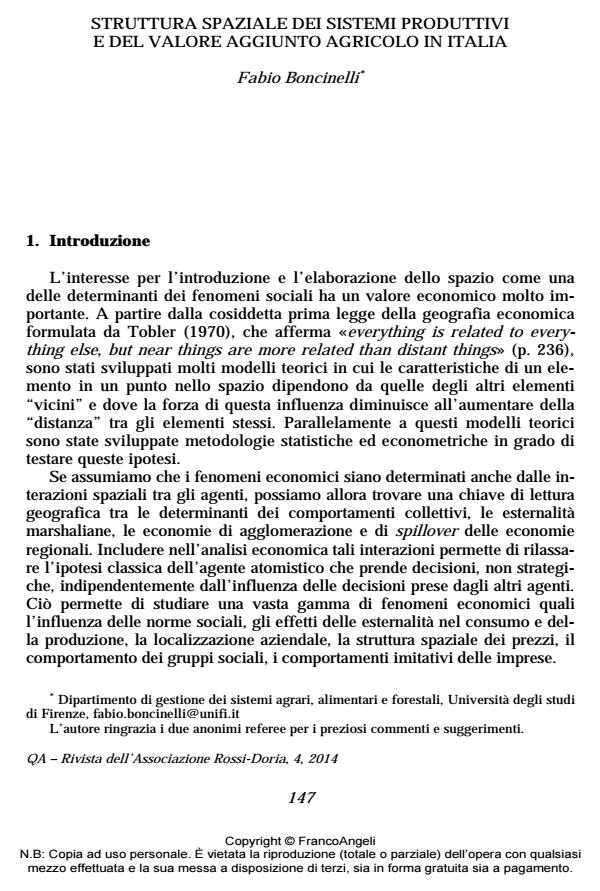Struttura spaziale dei sistemi produttivi e del valore aggiunto agricolo in Italia
Journal title QA Rivista dell’Associazione Rossi-Doria
Author/s Fabio Boncinelli
Publishing Year 2015 Issue 2014/4
Language Italian Pages 22 P. 147-168 File size 173 KB
DOI 10.3280/QU2014-004007
DOI is like a bar code for intellectual property: to have more infomation
click here
Below, you can see the article first page
If you want to buy this article in PDF format, you can do it, following the instructions to buy download credits

FrancoAngeli is member of Publishers International Linking Association, Inc (PILA), a not-for-profit association which run the CrossRef service enabling links to and from online scholarly content.
The Spatial Structure of Productive Systems and Agricultural Value Added in Italy The purpose of this paper is to show that, despite being strongly influenced by local factors, the agricultural sector shows a clustered spatial structure determined by regional spillover, homogeneous production technologies and weak competition between firms. To this end analysis will be carried out applying statistics and spatial econometrics methodologies to a reduced-Solow model. With quantification of the strength of the relationships between the different Italian provinces, it is possible to evaluate the spatial heterogeneity of the responses to development policies or to exogenous changes in agriculture. EconLit Classification: Q110, R120, O330
Keywords: Spillover, Agricultural value added, Innovation, Spatial lag model
Fabio Boncinelli, Struttura spaziale dei sistemi produttivi e del valore aggiunto agricolo in Italia in "QA Rivista dell’Associazione Rossi-Doria" 4/2014, pp 147-168, DOI: 10.3280/QU2014-004007